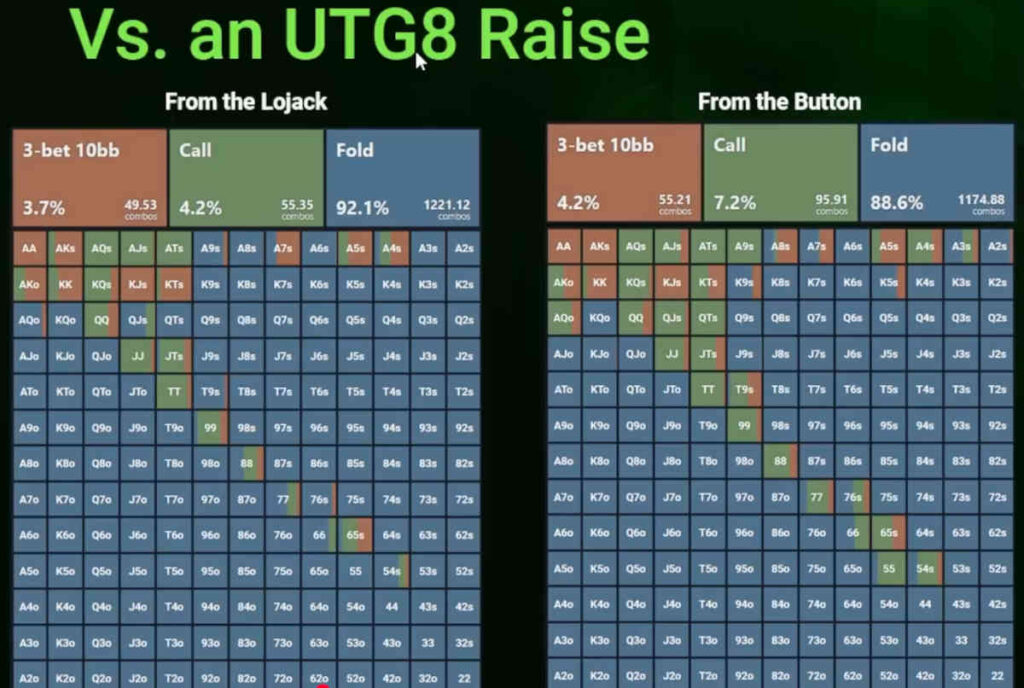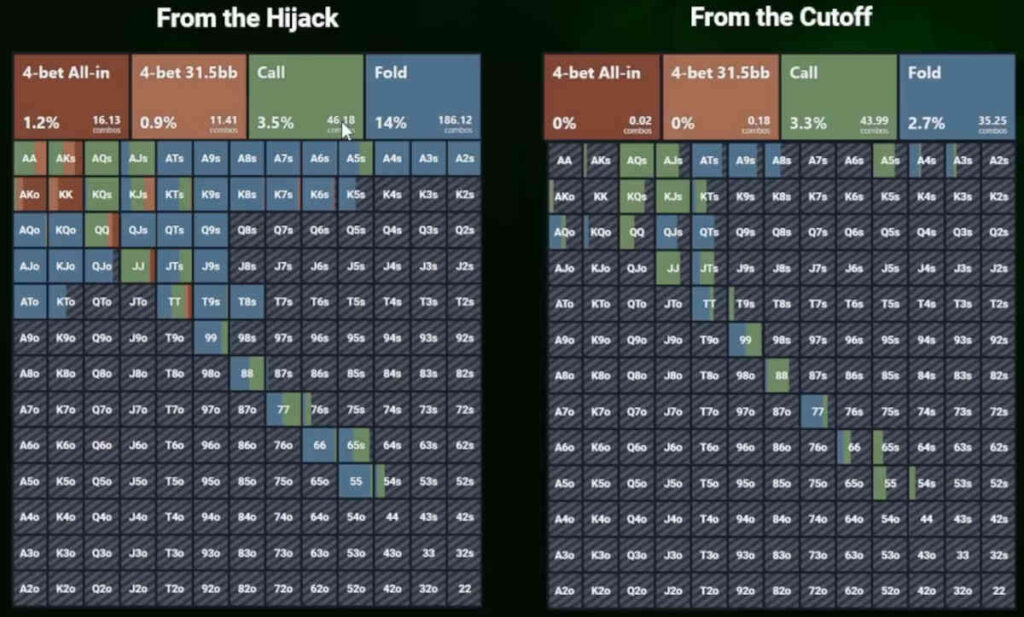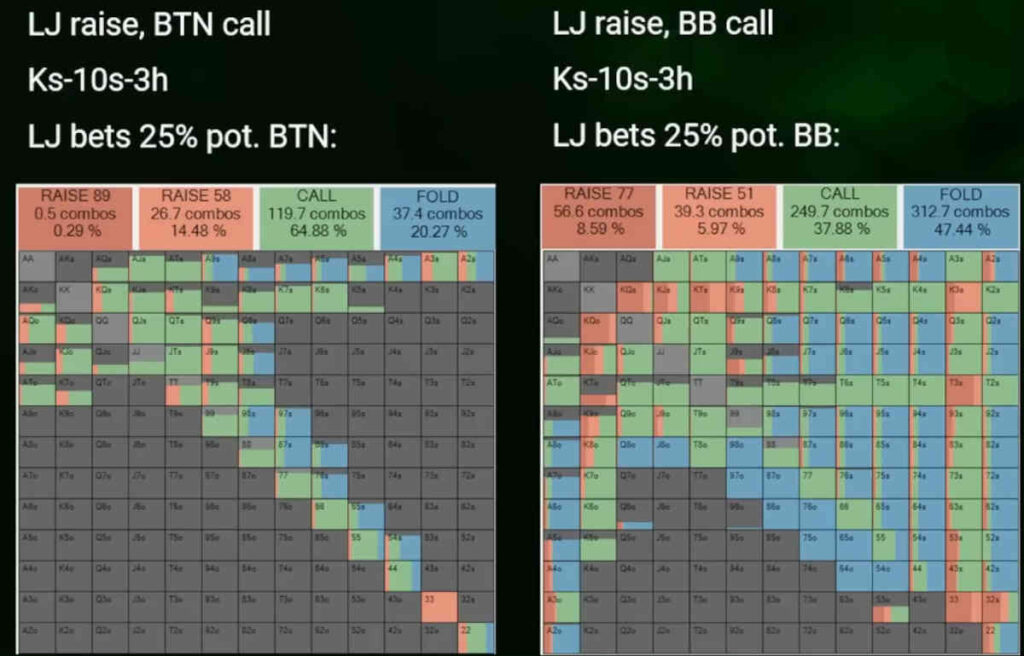One essential concept you need to understand and accept about poker is that you should be playing wider ranges in position compared to out-of-position. In No Limit Texas Hold’em, position is power.
There are two main reasons why playing wider ranges in position makes sense.
First of all, you get to act last, which means you get to control the size of the pot. When you reach the river, and you’re first to act, you can bet yourself, hoping that your opponent will call, or check, hoping that they’ll bet, and you can get the check-raise in.
In position, on the other hand, you are last to act, so you get much better control. If they bet, you can decide whether to fold, call, or raise. When they check, you still get the option to bet and put more money in the pot. And, in a game where that bet can be your entire stack, if you so choose, this is very powerful.
Secondly, you get much more information about your opponent’s range, and the more straightforward their strategy is, the more valuable this information becomes.
For example, against someone who only bets on the river when they believe they have a strong hand, you can easily fold all your bluff catchers. Conversely, when they check, you can bluff much more liberally.
For all these reasons, you want to play more hands in position, and this applies to preflop and after the flop alike.
Playing In Position Before the Flop
Let’s first consider some preflop scenarios to illustrate the power of position. Say a UTG player raises at an 8-handed table. Two graphs below show how we should proceed from lojack and from the button, and you can notice that we’re playing almost 50% more hands from the button.

On the button, we are getting involved with 11.5% of our entire range, compared to just under 8% in the lojack seat. This graph shows very clearly how our ranges get wider as the position gets later.
Now, let’s look at a spot where the hijack raises, the cutoff calls, and the button 3-bets.

You’ll notice how the hijack gets to call with 20 hand combinations, while the cutoff, once the hijack folds, can call with 30 combos. The cutoff can call wider, with hands like AJs, KJs, some JTs, A5s, 54s, etc. The hijack must be much more careful, as they’ll have to play the hand out of position, and they still have the cutoff to act behind.
If we compare this situation to the one where the hijack raises, the cutoff calls, and the big blind 3-bets, we can see that calling ranges are much wider for both players and include 40+ combinations. This is primarily because they’ll get to play in position to the preflop aggressor.

Playing in Position After the Flop
The same basic concept applies to our strategy after the flop. Playing out of position, you’ll under-realize your equity, which means that you’ll have to fold some hands that would end up winners on the showdown.
For example, you defend from the big blind and flop a bottom pair. You can check-call a flop bet, but if your opponent continues betting on the turn and/or on the river, you’ll often have no option but to fold, unless you improve.
In position, you have more information about your opponent’s range, and they also have to play more cautiously as you get the last say and can always potentially raise their bet. This means they have to check more often, which, in turn, allows you to check with your weaker made hands and get them to a showdown at a much higher frequency.
In other words, playing out of position, you are folding too much compared to your minimum defense frequency, which is basically how much you need to call in any given spot to make it impossible for your opponents to exploit you.
Let’s look at another example/comparison. The two graphs below show the scenario featuring stacks of 40 big blinds effective. On the left graph, the lojack raises and the button calls, while the right one shows the lojack raising and the big blind calling.
The flop comes K♠10♠3♥, and in both spots, the lojack goes for a continuation bet of 25% of the pot.

There are some significant differences between the calling ranges in these two spots. We shouldn’t look just at percentages, because the button’s calling range before the flop is much stronger to begin with, but we can focus on some specific hands.
For example, a hand like A4 suited calls on the button about half the time (spade flush draw and backdoor heart draw). In the big blind, we are only raising with a spade flush draw and folding the rest. The same goes for A2.
These types of hands get to call in position at a higher frequency.
Then we have hands like J8 with hearts calling a bit more often in position, as well as small pocket pairs like pocket fives.
Out of position, we’ll be raising more, which may not be shown that clearly in this particular example, but that’s a general principle. In position, we can call more to try and realize our equity.
So, to sum it up, play with wider ranges in position, take advantage of the fact that you get to act last, and improve your win rate by getting to more showdowns with marginal hands and attacking weakness coming from your out-of-position opponents.


